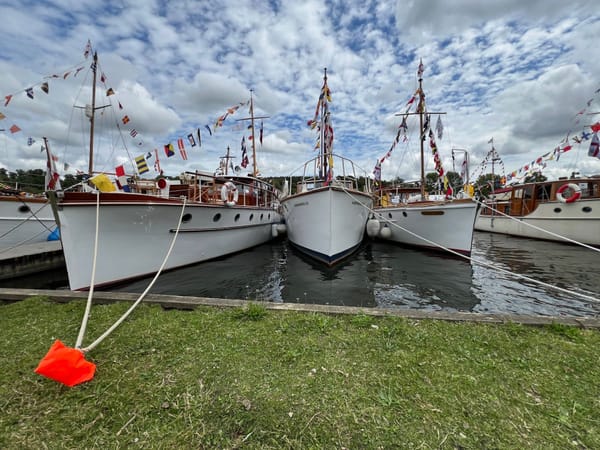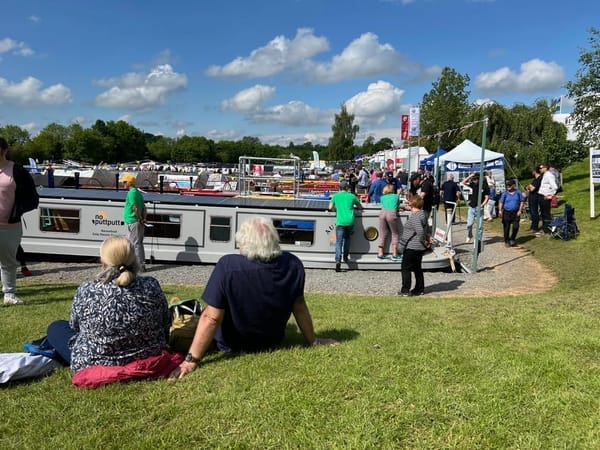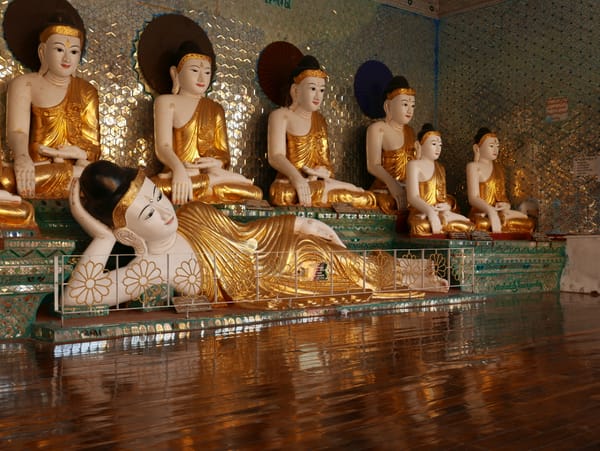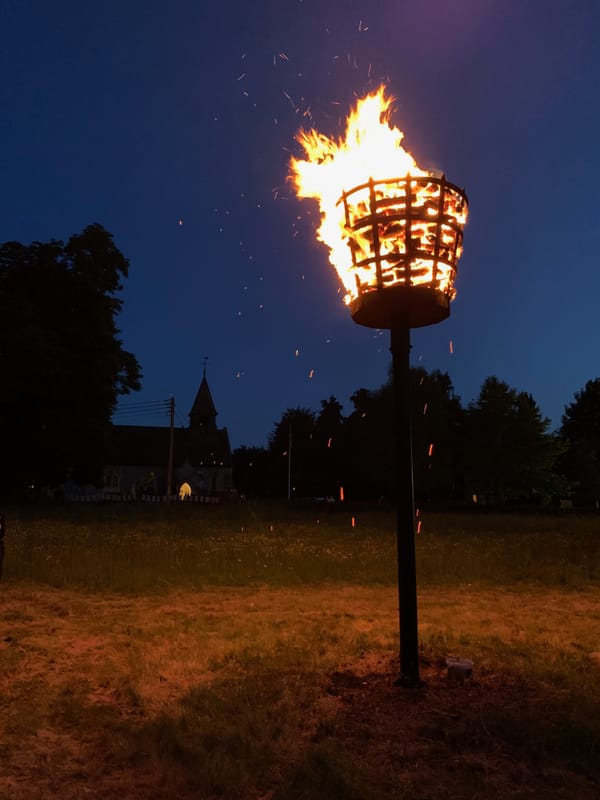Vietnam — Nhà Thờ Đức Bà Sài Gòn (Saigon Notre-Dame Basilica), Ho Chi Minh City, Vietnam
My first day exploring Ho Chi Minh City (Saigon), Vietnam
September 2015
First day exploring Ho Chi Minh City (Saigon), Vietnam.
The train journey to Ho Chi Minh City (Saigon) on the Reunification Express was a great experience. A fantastic way to see Vietnam.
The first stop on my walk around Ho Chi Minh City (HCMC; Saigon) was the Nhà Thờ Đức Bà Sài Gòn (Saigon Notre-Dame Basilica). A stunning-looking building, and it was a real surprise. I wasn’t expecting it. I had seen a lot of church spires on the train down from Hanoi, but this was my first opportunity to get up close with a church (OK, a basilica) in Ho Chi Minh City (Saigon).
Nhà Thờ Đức Bà Sài Gòn (Saigon Notre-Dame Basilica) was a great-looking building and one that is still in use and part of life in Ho Chi Minh City (Saigon). But, it was a little odd, and I have observed this in several churches and cathedrals I have visited in SE Asia; there was no obvious evidence of the colonial past in the building. There were some plaques in side chapels; I don't know if they were memorials or plaques of thanks, and that was it. I was lucky to get in to see the interior as the basilica closed after the worshippers had left the service.
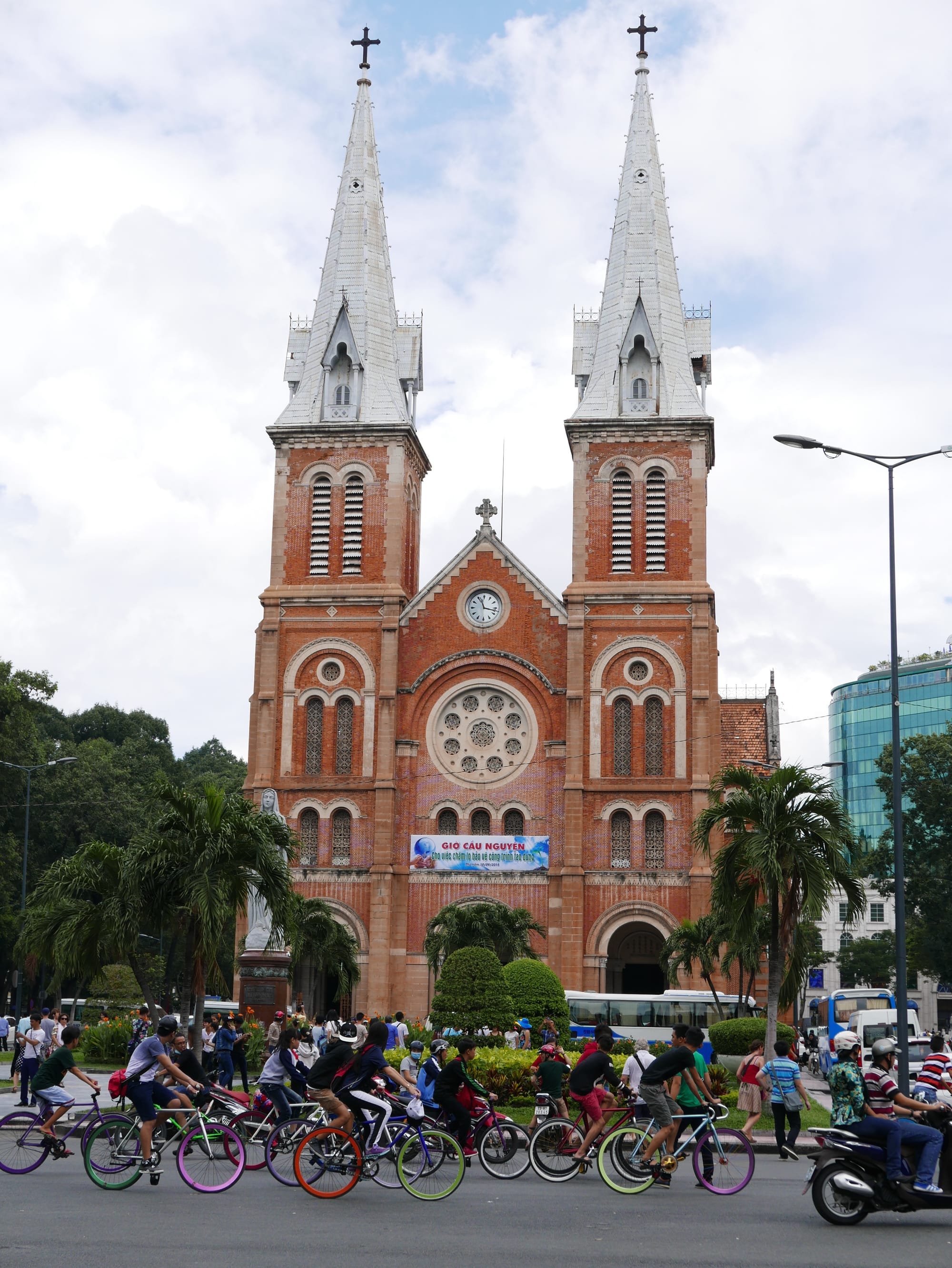
The basilica seemed to be very popular with wedding parties — but not so much for wedding ceremonies, as a backdrop to their wedding photos.
I saw several brides and grooms having their photographs taken around the basilica.
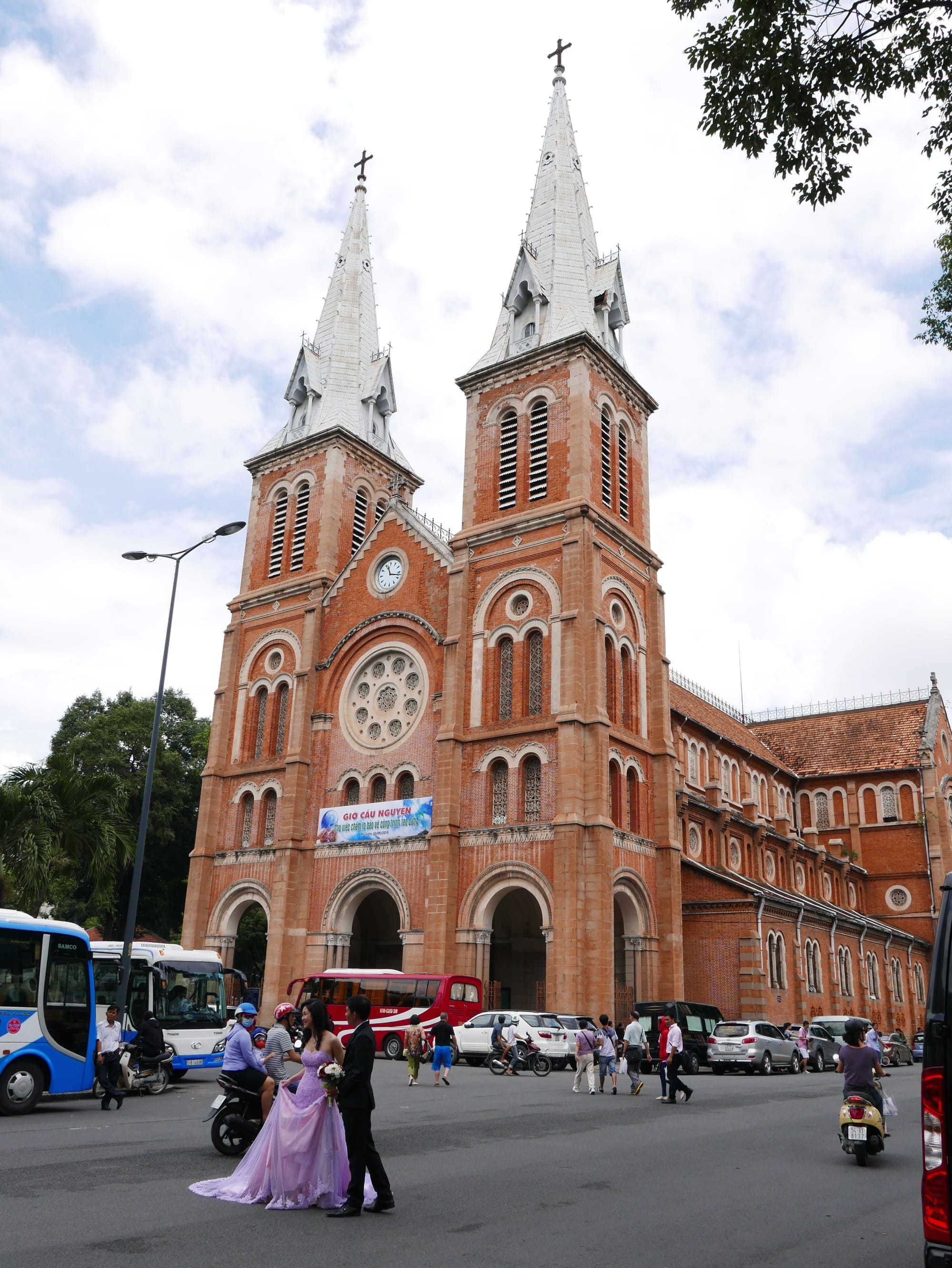
It also looks like the number of the “happy couples” commemorate the occasion of their photo shoot with some graffiti on the outside wall of the basilica.
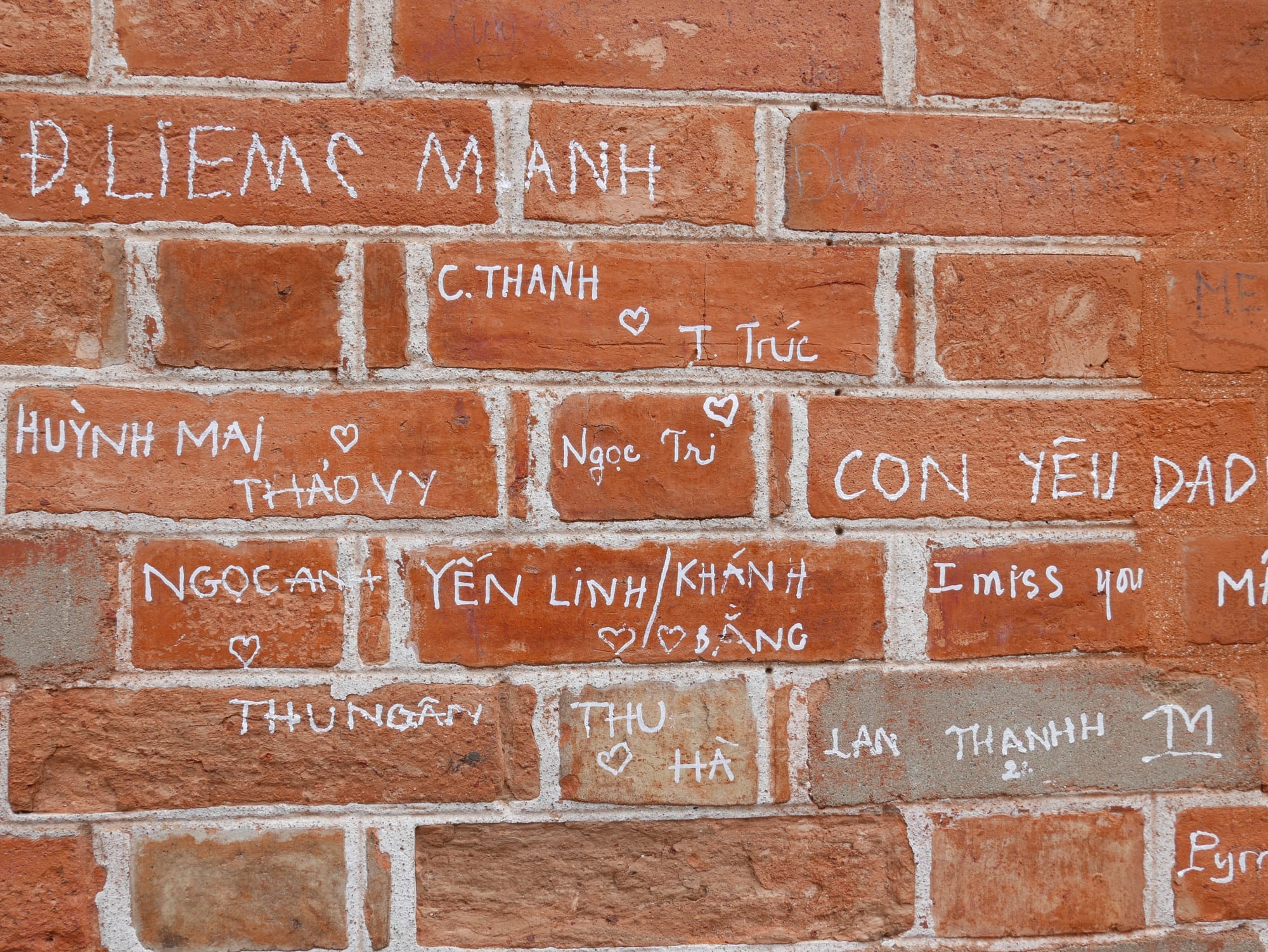
The interior of the basilica was stunning. It was very well maintained, and the basilica was still in regular use as a place of worship. There were some pretty stained glass windows, although I wasn’t sold on the use of neon.
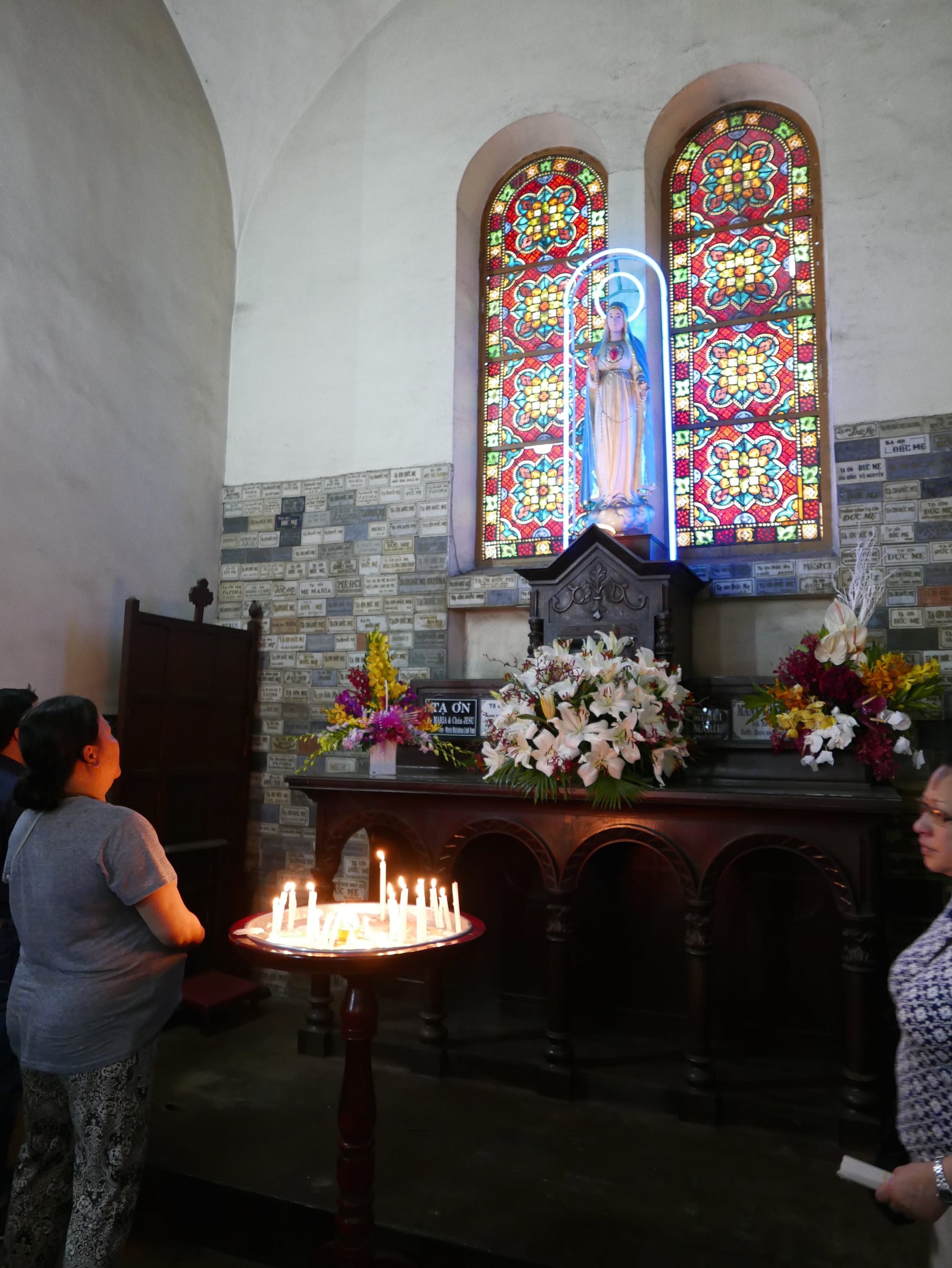
The basilica was impressive, with a wide central aisle leading up to the altar.
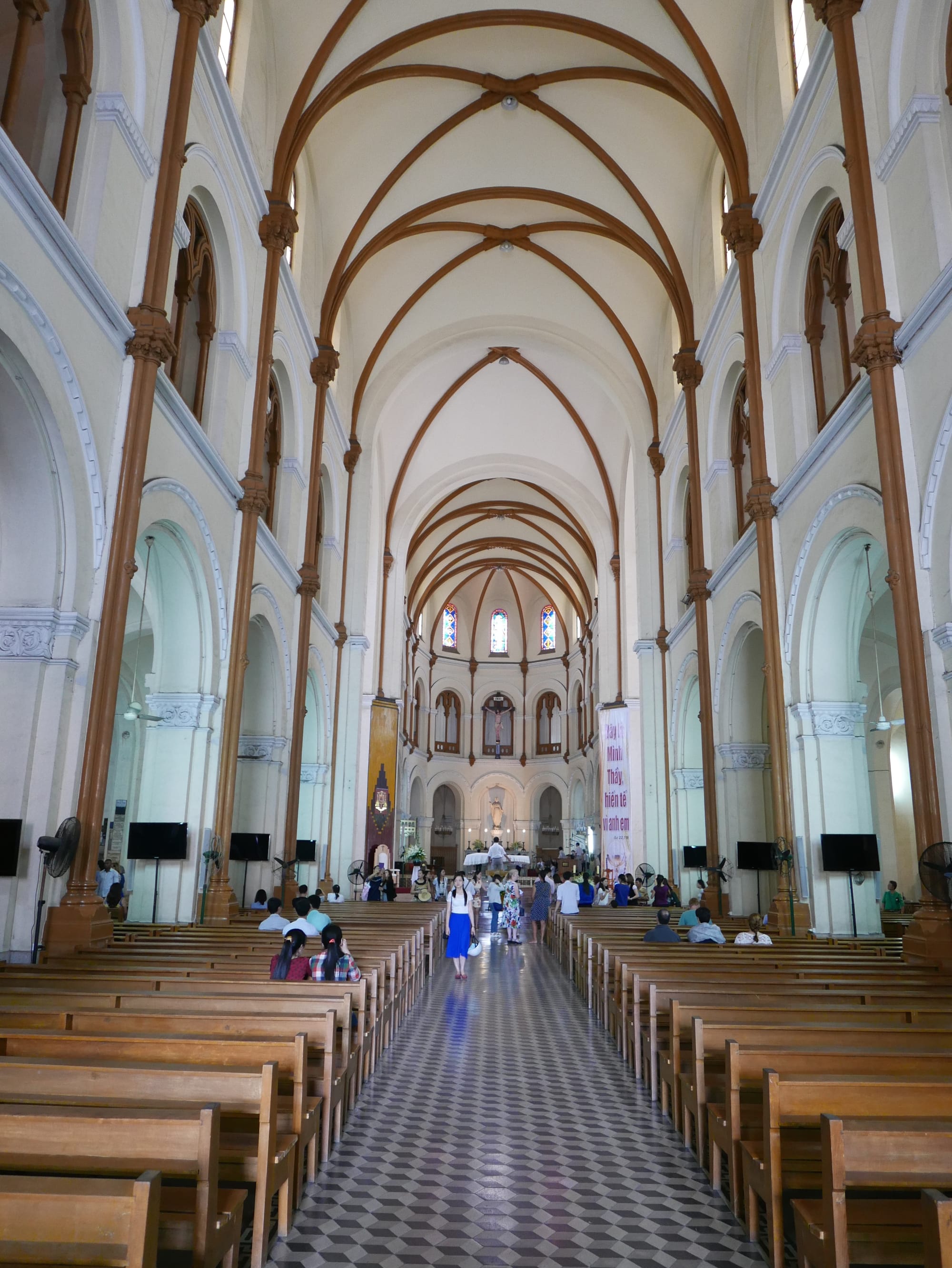
What I did find interesting was the number of small dedication plaques in the side chapels. The plaques had a French feel and were the only sign in the basilica of the colonial past.
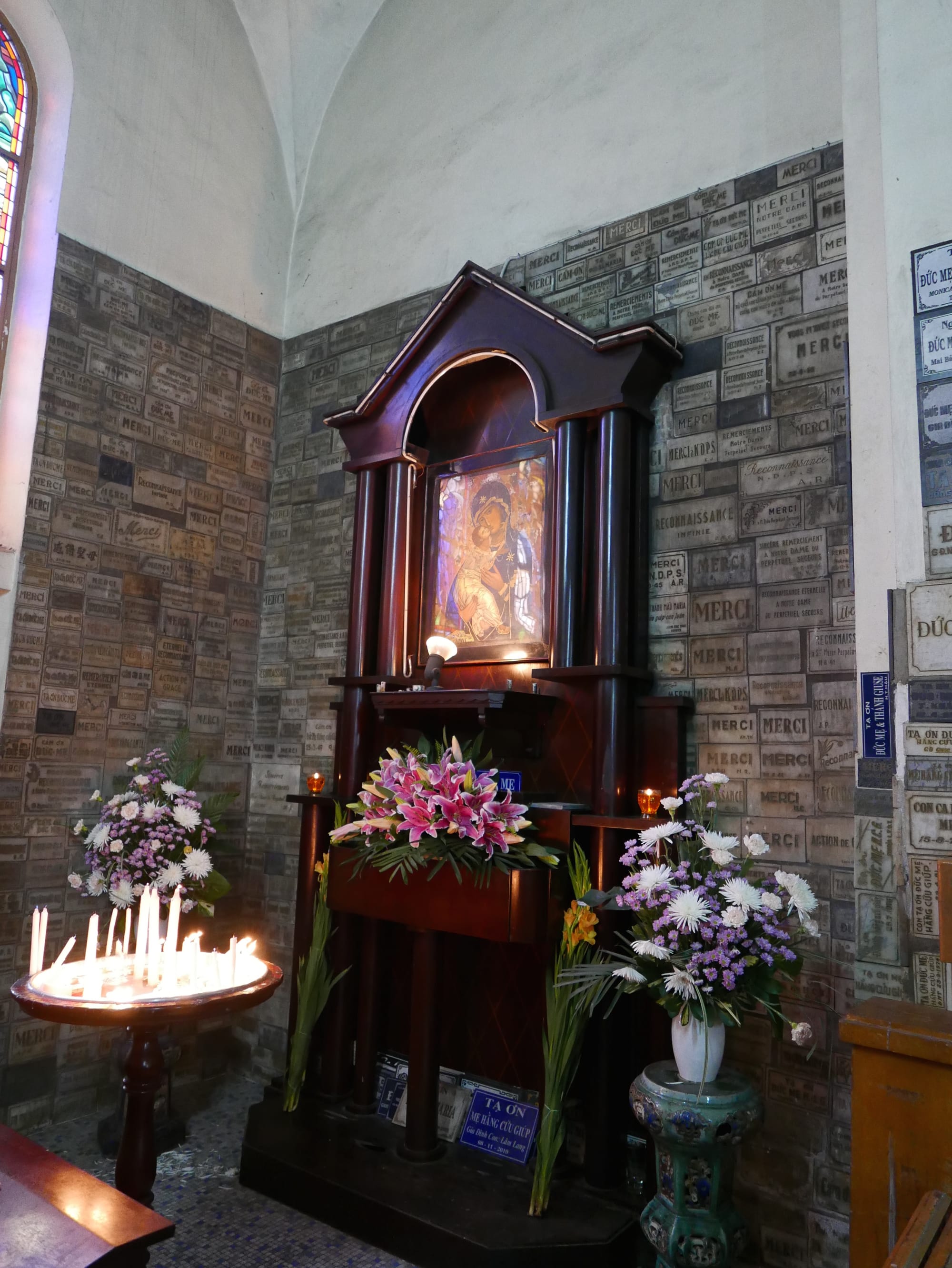
Also, the plaques weren’t particularly old, so it is still an ongoing process.
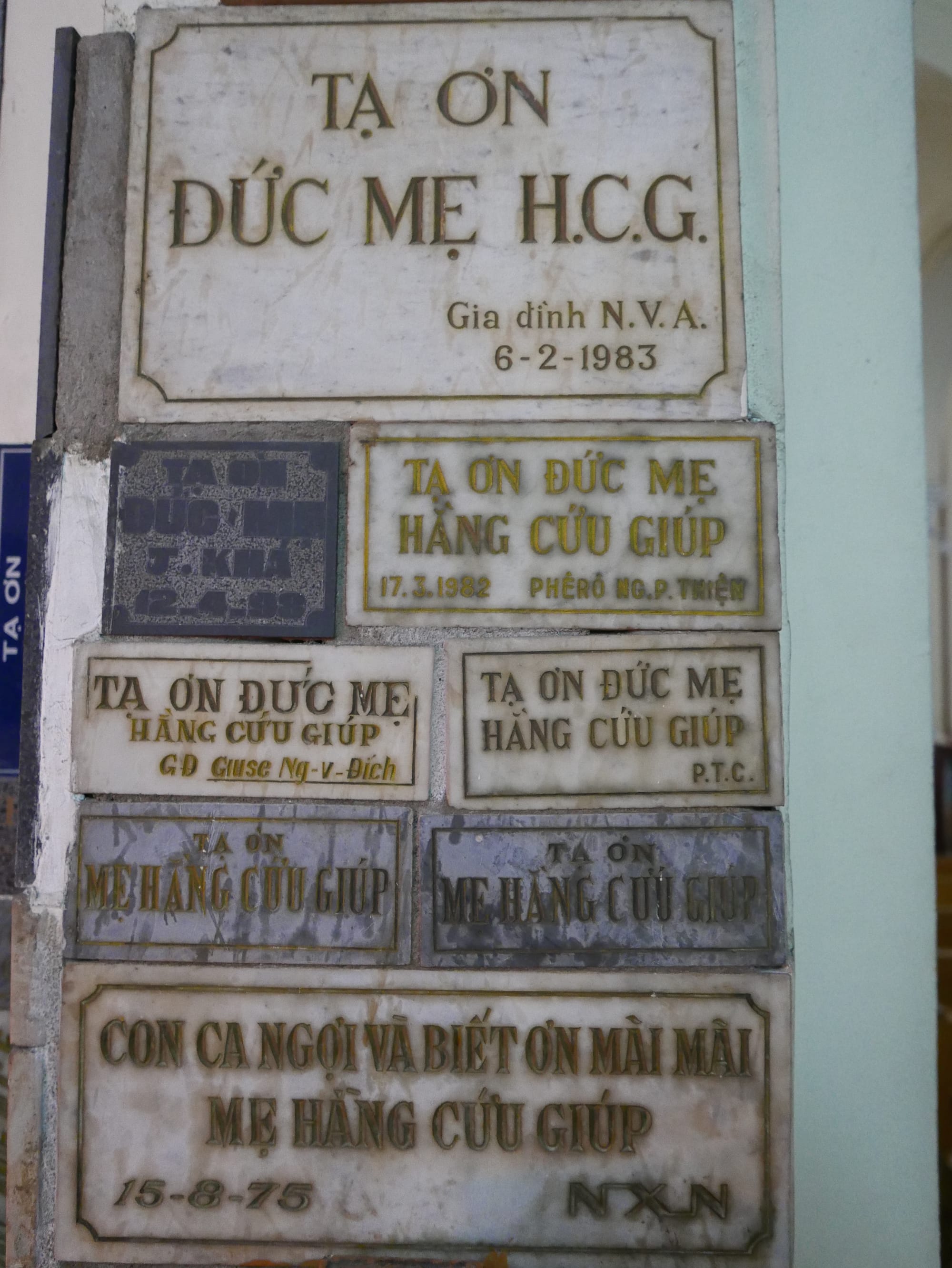
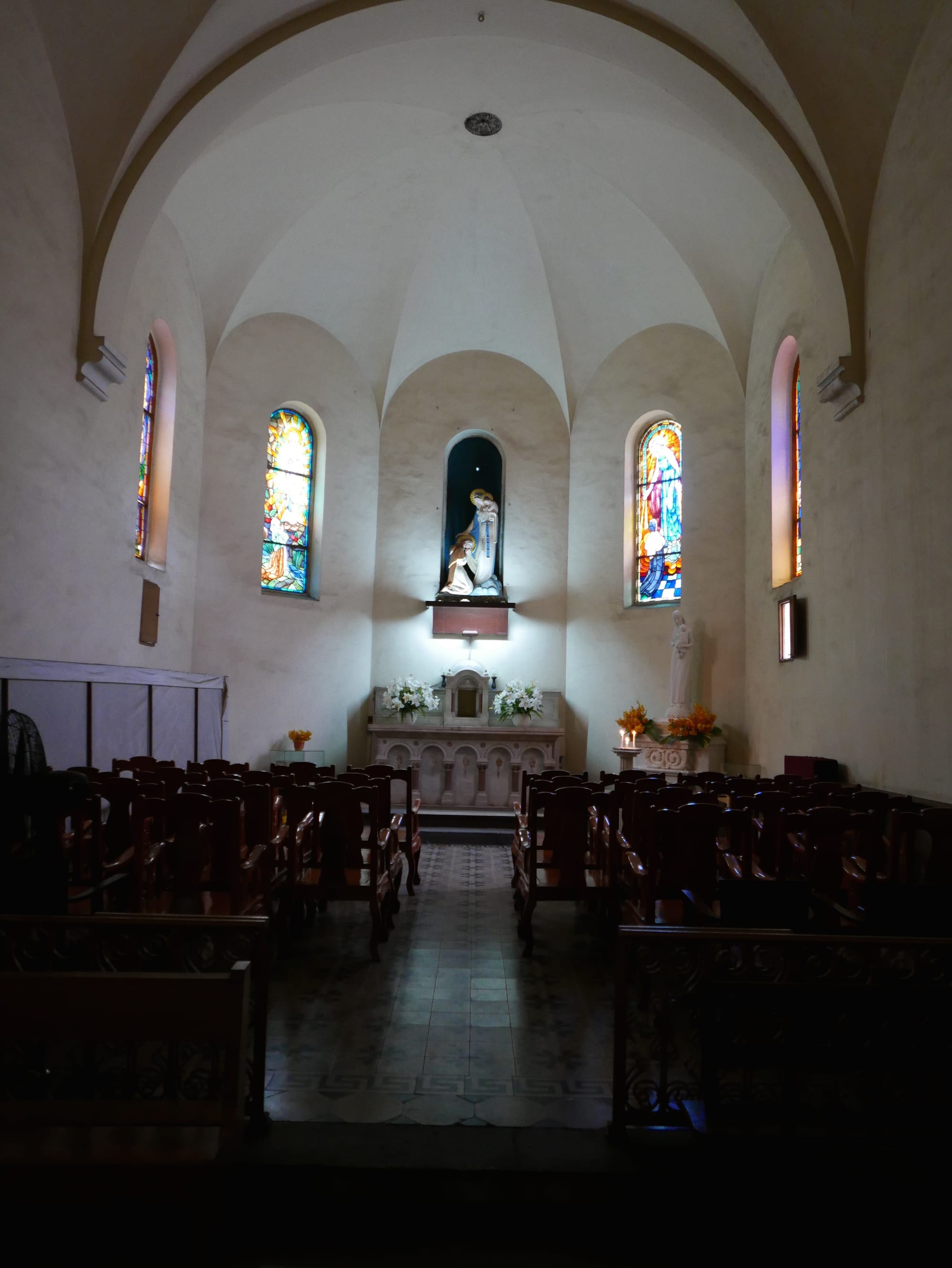
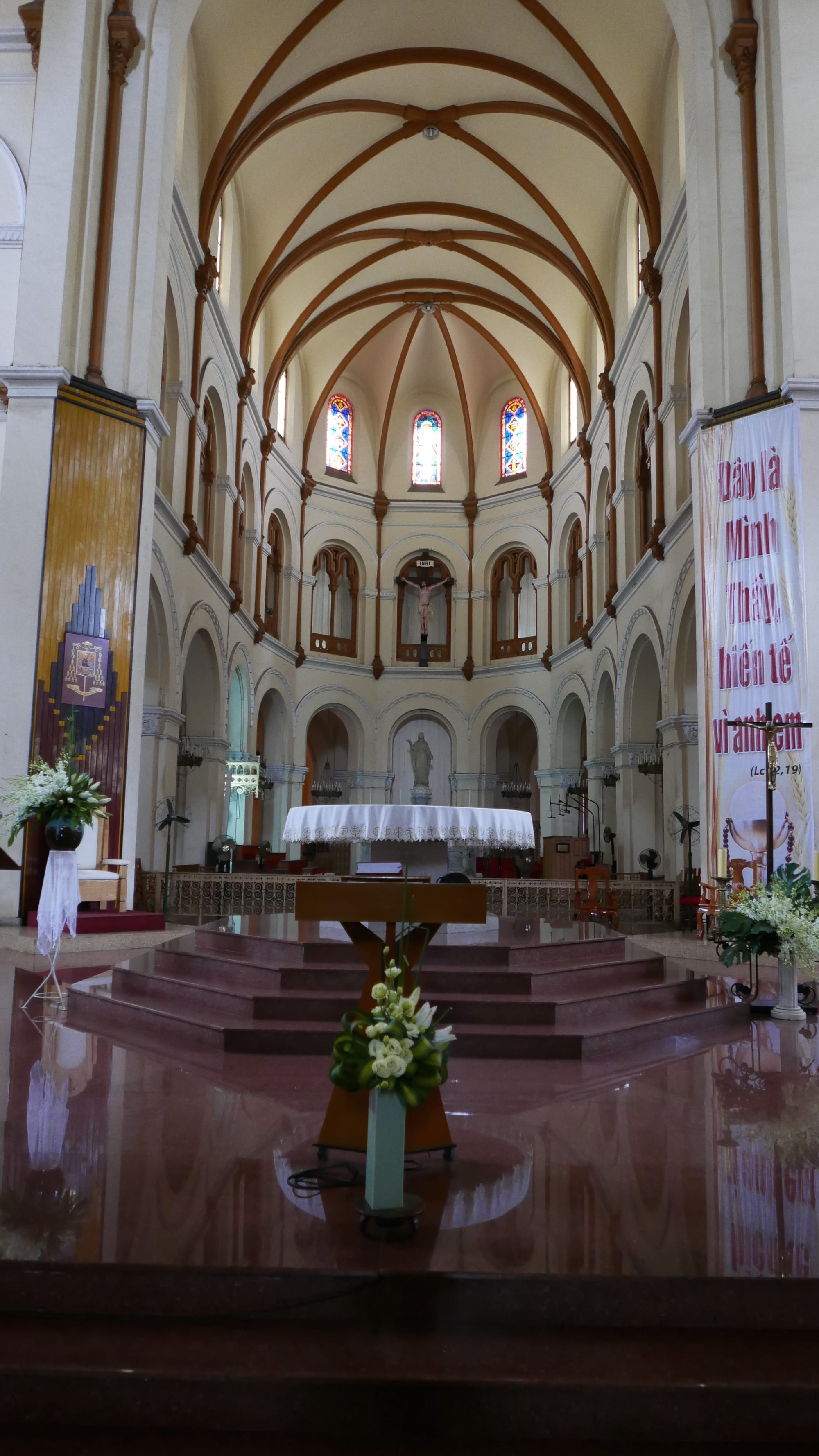
More of the plaques. If anyone can explain to me the true meaning of these plaques, then please leave a comment below.
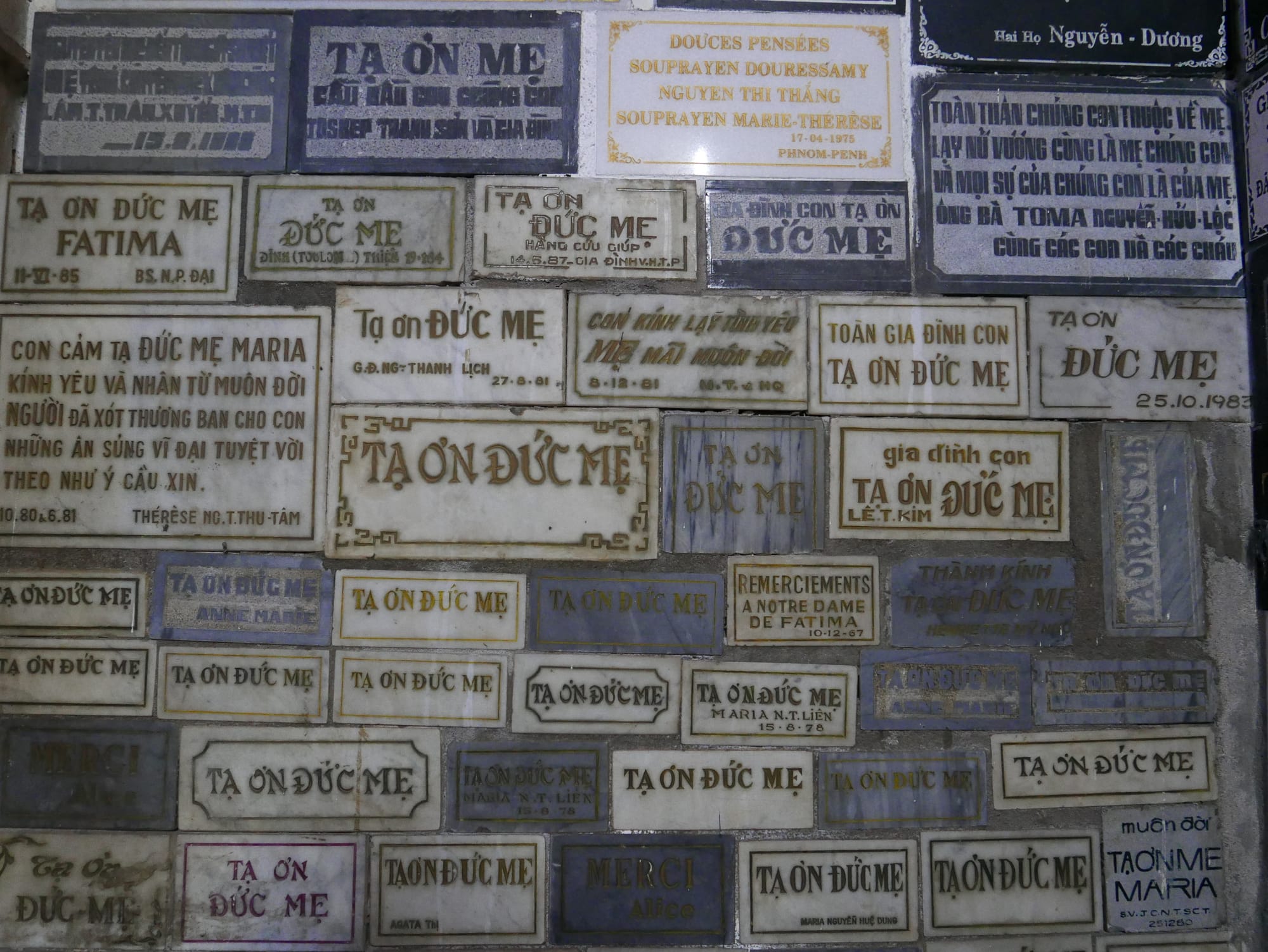
Again with the neon. Was this necessary in a basilica?
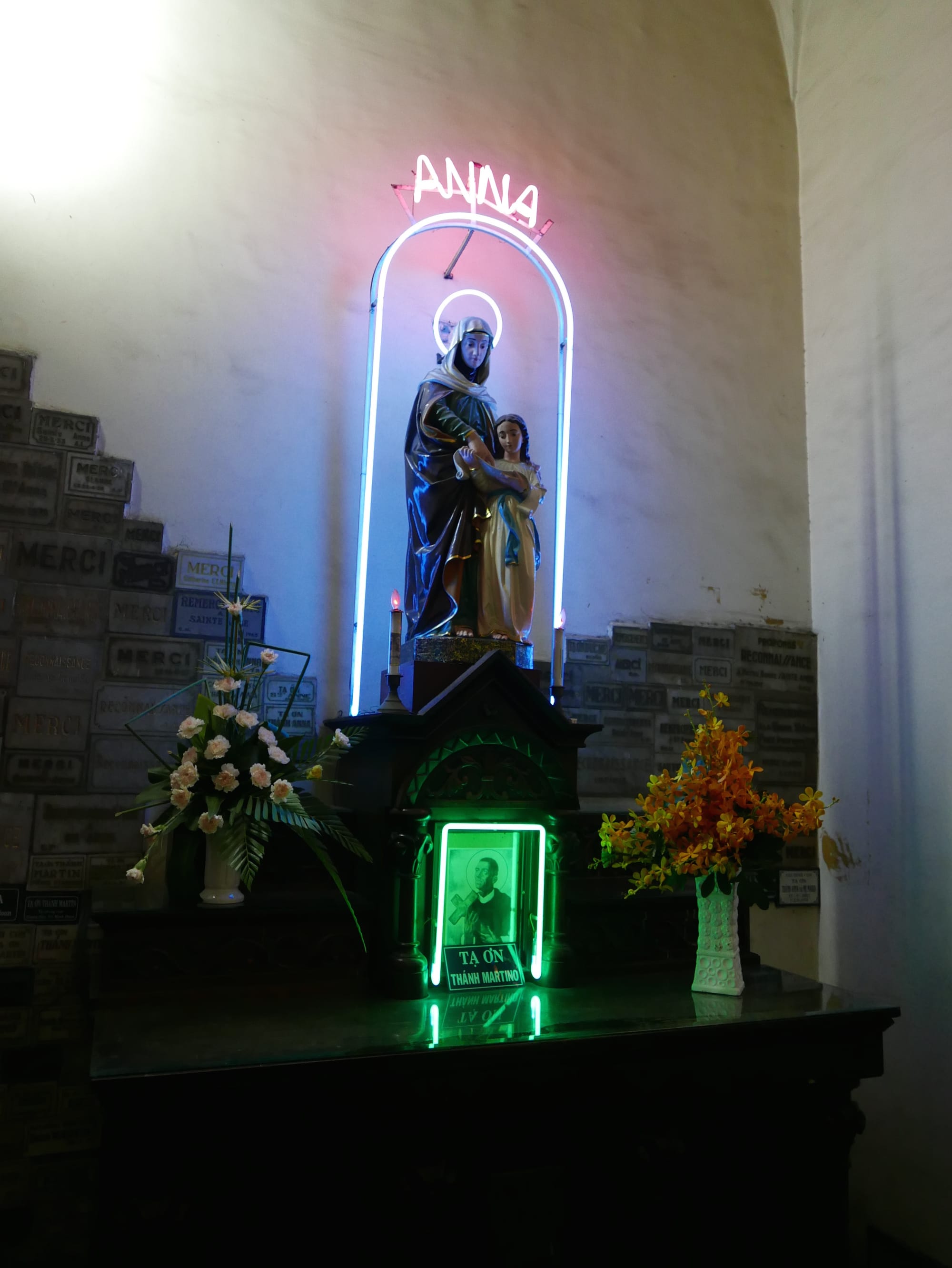
I found Nhà Thờ Đức Bà Sài Gòn (Saigon Notre-Dame Basilica) in Ho Chi Minh City (Saigon) to be an interesting place, and I would recommend a visit to the building to anyone coming to Ho Chi Minh City (Saigon). In addition, there
was also a very nice park nearby to explore, the Saigon Central Post Office (another attractive building) was next door, and the Dinh Thống Nhất (Independence Palace / Reunification Palace) was just up the road.
Foursquare: Nhà Thờ Đức Bà Sài Gòn (Saigon Notre-Dame Basilica)
